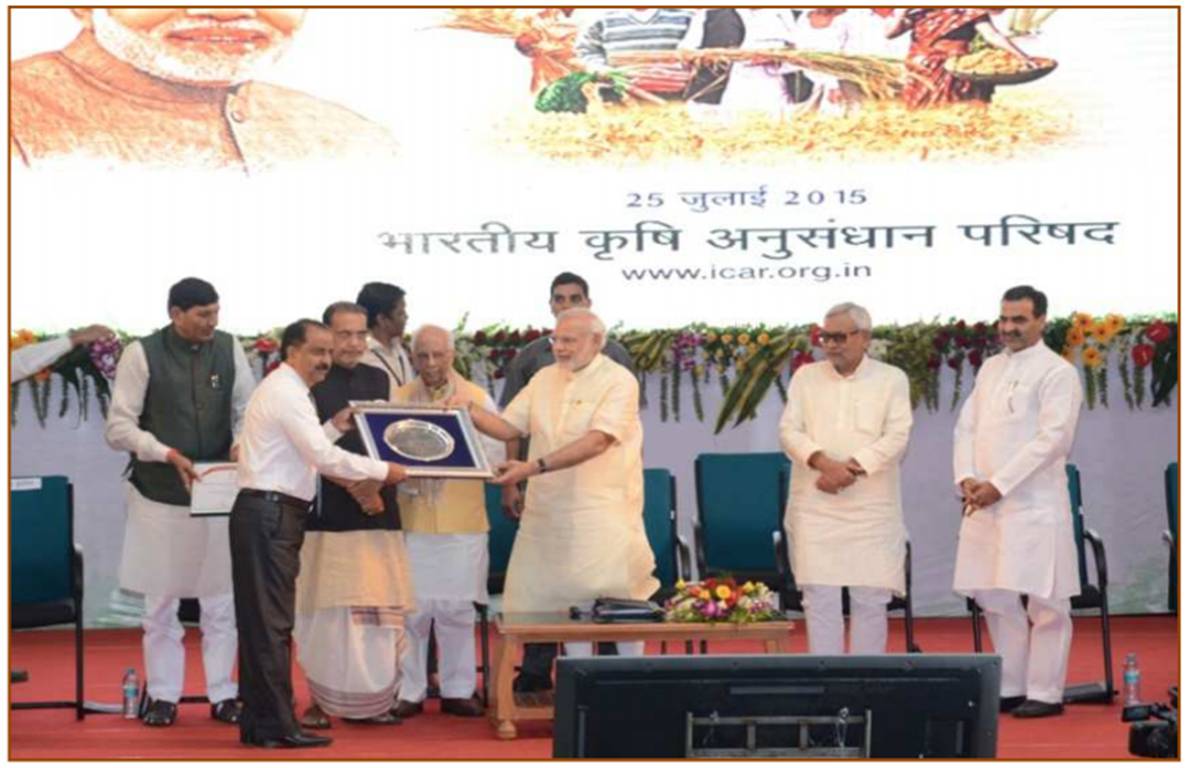NCVTC – At a Glance
Veterinary Microbes
- First laboratory confirmed camelpox virus zoonosis.
- Accessioning of vaccine strains of viruses viz., Peste des petits ruminants virus, Sheeppox (Srinagar strain), Goatpox virus (Uttarkashi strain), Orf virus (Mukteswar strain), NDV (R2B strain) and NDV (Fstrain).
- Complete genome sequencing of two isolates of Classical swine fever virus.
- First isolation and characterization of Bordetella bronchiseptica, Actinobacillus equilli, Staphylococcus hyicus, Trueperella pyogenes.
- First isolation and identification of Moraxella (Branhamella) ovis from ovine keratoconjunctivitis in sheep and methicillin-resistant coagulase negative Staphylococcus sciuri from goats.
- Whole genome sequencing of Pasteurella multocida sub spp. multocida B:2 serotype, Trueperella pyogenes, Bordetella bronchiseptica, Pasteurella multocida, Actinobacillus equuli and Salmonella gallinarum.
- Bacteriophages against a variety of pathogenic bacteria were deposited to NCVTC repository, including a novel thermotolerant bacteriophage isolated from Ganga river water.
Rumen Microbes
- Isolation and characterization of seven tannin degrading bacteria-Streptococcus gallolyticus from goat,fibre degrading bacteria Ruminococcus flavefaciens, Prevotella sp. and Butyrivibrio sp. from buffaloes and cattle, and nitrate reducing and cellulose degrading E. coli from buffalo.
- Isolation of rumen fungi – Anaeromyces sp., Orpinomyces intercalaris and Orpinomyces joyonii from buffaloes; Piromyces sp. and Neocallimastix sp. from goats.
Dairy Microbes
- Preservation of dairy microbes, viz., Lactobacillus spp., Lactococcus spp., Lactococcus lactis ssp. lactis, Lactococcus lactis. ssp. Cremoris, Lactococcus lactis ssp. lactis, Streptococcus thermophilus, Leuconostoc sp., Bifidobacterium sp., Bifidobacterium dentium, Bifidobacterium longum, Micrococcus sp., Kluyveromyces lactis and Saccharomyces bisporus.
- Combination of L. lactis ssp lactis-C12 and Leuconostoc mesenteroides ssp. mesenteroidesis suitable for curd and buttermilk preparation.
- Six Lactobacillus sp. having phytase degrading potential and strong antifungal activity have been isolated form milk-cereal fermented products (Rabadi samples).
- Anamylytic strain of Pediococcus acidolactici isolate has potential as starter culture in preparation of milk-cereal fermented products.
Virus repository
Accessioned >200 virus isolates representing 15 families affecting different livestock species in the repository.All cultures are being maintained as freeze-dried or liquid forms in deep freezers. The cultures can be provided for academic or research purposes to the various stakeholders.
Bacterial repository
Around 1200 economically/scientifically important bacterial isolates of animal origin comprising 70 different genera were accessioned, preserved and are being maintained in the repository. These strains have been isolated from diverse host species such as pig, buffalo, poultry, horse, donkey, mice etc. The passport data- phenotypic/genotypic information including microscopic cell morphology photographs, 16S rRNA and other specific gene sequences have been generated for authentication. Many rare strains of bacteria have been isolated, identified and characterized from the diverse animal background.
Bacteriophage repository
Presently, NCVTC has 118 accessioned bacteriophages isolated from diverse environments. All characterized bacteriophages (by TEM & protein profiling)have been cryopreserved in the repository for future use.Therapeutic value of some of the bacteriophages against pathogenic bacteria is being evaluated.
Repository of microbial genetic resources
For conservation of genetic materials of microbes, the repository of recombinant clones and genomic DNA have been developed in the NCVTC. A specialized repository in the form of gateway Open Reading Frames (ORFs) clone libraries of equine influenza virus and buffalopox virus has also been developed. Currently, accessioned genetic resources include – >500 recombinant clones and 280 bacterial DNA, which are being maintained in the repository. Such state-of-the-art resources will serve as reference material.
Bacterial repository
Around 1200 economically/scientifically important bacterial isolates of animal origincomprising70 different genera were accessioned, preserved and are being maintained in the repository. These strains have been isolated from diverse host species such as pig, buffalo, poultry, horse, donkey, mice etc. The passport data- phenotypic/genotypic information including microscopic cell morphology photographs, 16S rRNA and other specific gene sequences have been generated for authentication. Many rare strains of bacteria have been isolated, identified and characterized from the diverse animal background.
Cell lines
Seventeen different cell lines along with three primary cell cultures viz., Vero, MDBK, MDCK, BHK21, RK13, HELA, PK15, HEP2, MRC5, NLBK, MA104, Equine lung, Porcine Stable, CEF, CEL, BRT, goat kidney, goat testicle and LT cells are being maintained for isolation of various virus types and other research purposes.
The NCVTC is in the process of getting recognition as National Repository of Veterinary pathogens by National Biodiversity Authority of India (NBAI), Govt. of India, Ministry of Environment, Forest and Climate Change.

